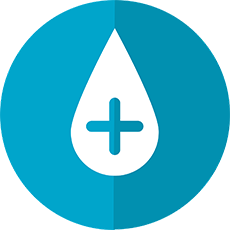
Rhinoplasty
A Guide to Nose Surgery
by the Melbourne ENT Group
What is Rhinoplasty?
Surgery that alters the shape of the nose is referred to as rhinoplasty. There are several reasons why you might want rhinoplasty, including to change the shape of your nose, to improve the way you breathe through your nose, or both.
The upper part of the nose is comprised of bone, while the lower part of the nose is comprised of cartilage, an elastic tissue you can feel best at the tip. Rhinoplasty can be used to alter bone, cartilage, and skin. A skilled surgeon will plan a rhinoplasty carefully to ensure that it fits in with your other features. Each surgery is only conducted after a custom plan is created to guide the process.
You can discuss the possibility of rhinoplasty with your surgeon to determine if it would be a good option for you.
Why choose rhinoplasty?
The nose is an important part of the body that serves several different functions, including breathing and smell. Depending on the way the nose develops, there could be deformities, birth defects or other issues that cause the nose to not work as well as it could.
Trauma or developmental variations can lead to suboptimal nasal breathing function and/or appearance.
For instance, the internal partition between the right and left sides of the nose , the nasal septum, is not in the middle in some people. This is called a deviated septum. If the deviation is minor, it can often be corrected with a septoplasty surgery. However, if the septum is significantly deviated, an open approach septo-rhinoplasty is required.
Rhinoplasty can also correct other causes of blocked nose such as weakness of the side walls of the nose, the nasal valves.
Rhinoplasty can change the proportions, shape, and size of the nose and therefore can change breathing as well as the appearance of the nose. Many people are self-conscious about their nose, and research has shown rhinoplasty improves people’s perception of attractiveness, successfulness and overall health.
What kinds of problems can rhinoplasty treat?
- Correcting a deviated septum – to improve breathing
- Removing obstructions to breathing in one or both nostrils
- Changing facial balance by altering nose size
- Reducing and contouring a nasal tip that is hooked, enlarged, or bulbous
- Correcting nasal asymmetry
- Improving the appearance of nostrils that are upturned, wide, or large
- Reducing bumps or depressions in the bridge of the nose
Difference between Rhinoplasty and Septoplasty
Both rhinoplasty and septoplasty are nose surgeries, but there are some differences. Rhinoplasty focuses on changing the shape of your nose, which can affect your nose’s appearance and the way it functions – like improving your breathing. Rhinoplasty may be performed to alter the look of the nose, the way you breathe, or both.
A crooked septum – the wall between the two nostrils – can make breathing much more difficult than it should be. Septoplasty is a surgery specifically to straighten the septum so that you end up with a right and left nostril passage. While septoplasty can be done on its own, it is often combined with a rhinoplasty.
Sometimes septal deviation is not the only cause for breathing issues and hence septoplasty alone may not be enough to fix the breathing issues. Rhinoplasty can change multiple aspects of the nose structure not just the crooked septum.
Also, a severely deviated septum may require an open septo-rhinoplasty surgery rather than a traditional septoplasty.
Rhinoplasty is a popular surgery because it offers a variety of benefits for those that need it, including:
- Easing breathing issues. Whether from a birth defect or due to an injury, many people struggle to breathe through their nose. Nose surgery can correct many problems that inhibit breathing (that decrease normal airflow), helping people breathe freely again. Many people breathe freely for the first time ever, especially after living with a birth defect.
- Fixing sinus issues. Sinus disease has many aspects to it but in some patients having severely deviated septum can obstruct the drainage of the sinuses and contribute to sinusitis. Correcting such deviating can lead to resolution of the sinusitis in the affected sinus.
- Nasal Blockage. Occasionally, nasal blockage can lead to sinus like issues, such as heaviness, congestion and headaches. In some people, unblocking nasal breathing can help those symptoms.
- Repair a broken nose. A broken nose, whether from an accident, a fight, or from some other cause, can lead to breathing troubles and an undesirable appearance. Many individuals get nose surgery to correct problems caused by a broken nose.
- Stop snoring. While not all snoring problems can be fixed through nose surgery, many can be corrected by a skilled surgeon. Snoring can be a significant health problem, so it is worth considering surgery if it will correct the snoring.
- Improved confidence. Nose surgery is so common because many, many people are unhappy with the appearance of their nose. After a successful nose surgery, it is common for patients to develop new, improved confidence due to the improvement in their appearance.
What are the risks?
Every significant surgery carries risks, including infection, bleeding and adverse reactions to anesthesia. Risks specific to rhinoplasty include:
- Noticeable scarring
- Breathing difficulties through the nose
- Septal perforation – a hole made in the septum
- Swelling
- Pain
- Discoloration
- An imbalance in the proportion of the nose to other facial features
- Persistent numbness around or in the nose
- Requirement for additional surgery
Is it easy to perform nose surgery?
When you look at your nose, it is easy to assume that performing nose surgery would be relatively simple. It’s not a heart or some other internal organ, after all. But the truth is that rhinoplasty is a relatively complex, difficult surgery. There are several reasons for this:
- Small changes can have big impacts. The changes the surgeon will make to your nose will often be very small. But even small changes to the nose can have a dramatic impact on the way your nose looks and functions. Since the margin for making mistakes is small, your surgeon needs to be extremely careful with every move they make. Surgeons who perform nose surgery at our practice are specially trained and experienced to perform this procedure.
- Changes may not be visible during surgery. One of the big challenges with nose surgery is that the surgeon may not be able to see the results of the changes made. The surgery requires the application of local anesthetic, which can cause the nose to swell – and any alterations made to the nose will also make it swell. All that swelling hides what the end result will look like.
- Every surgery must be customized. Some surgeries have a standard plan of action that is applied to most surgeries, but not rhinoplasty. Every step in your nose surgery must be made based on your unique circumstances, like the shape of your nose and what changes need to be made.
Can you go home soon after surgery?
Yes! The vast majority of nose surgeries are same-day procedures, which means you are likely to go home either on the day of surgery or the next day. There are exceptions, though, so you will want to talk with your doctor to be sure.
What is recovery like?
Most patients who get a rhinoplasty feel relatively normal after about a week of recovery time. Most people will require two weeks off work and exercise. Past that you can usually go back to your normal life. However, it is important to remember that there will be swelling well after that one-week period. Some swelling may remain for months after the surgery – although you are likely to forget about it after a few months. Your doctor may ask you to avoid some strenuous activities, such as running, for a week or more depending on your surgery.
Does rhinoplasty lead to a lot of pain?
If you have ever been hit in the nose, you know how intensely painful it can be – so it makes sense to wonder if a nose surgery will be similar. Fortunately, most people who get nose surgery do not experience a lot of pain, rating their pain the day after surgery between 0 and 4 out of 10. There will be some tenderness and swelling, especially right after the surgery, but it is unlikely that the pain will be excessive.
Summary:
For the right patient, rhinoplasty can be a great option for 5 reasons:
- To ease breathing issues by correcting problems that inhibit normal airflow
- To fix sinus issues and nasal blockage
- To repair a broken nose
- To get rid of snoring issues (in some cases)
- To improve self-confidence


